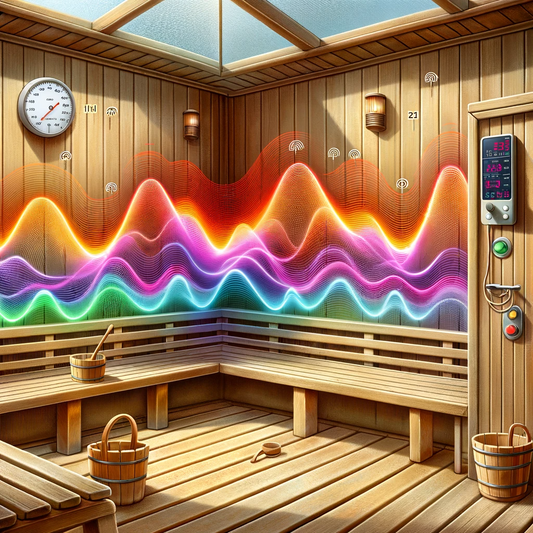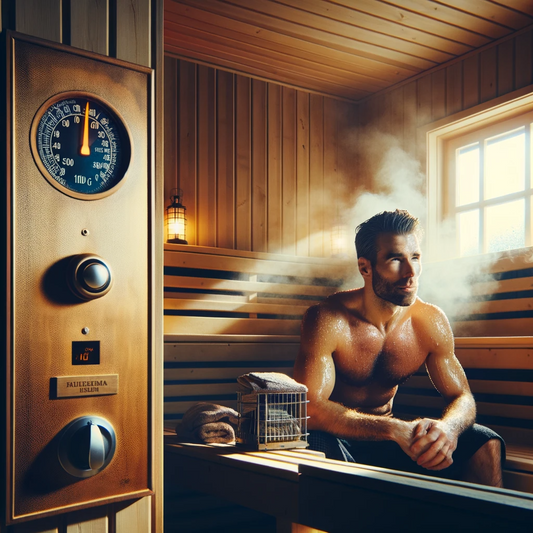Today's saunas, including both traditional and infrared variants, offer a great alternative for those seeking pain relief. Yup, that’s right! Did you know that saunas can impact your body’s ability to handle and resolve pain? Whether your pain is chronic, acute, or associated with muscle or joint discomfort, it is not fun. So of course, here you are, exploring natural and effective solutions – like sauna bathing! In this article, we’ll dive into the scientific underpinnings of how sauna bathing contributes to pain relief, providing a bridge between age-old practices and contemporary pain management strategies. Through an exploration of empirical evidence, we aim to shed light on the therapeutic potential of sauna bathing in alleviating various pain ailments.
Saunas have a rich history dating back to ancient civilizations where heat therapy was a cornerstone for pain alleviation and overall well-being. The tradition of sauna bathing, notably in Finland, has transcended generations, embodying a holistic approach to health. Over time, the practice has merged with modern technology, leading to enhanced sauna designs that optimize the benefits of heat therapy. This fusion of tradition and innovation has positioned saunas as a valuable asset in modern pain management paradigms. The enduring legacy of saunas in pain relief showcases their potential as a natural, effective solution in today's health-centric society.
Embarking on a journey through the steamy, comforting embrace of a sauna isn't merely an expedition into a wooden oasis of warmth, but a rendezvous with science in action. When it comes to pain relief, saunas are like cozy laboratories where the alchemy of heat works its magic on our tender, aching bodies. Let’s unwrap this warm gift of tranquility and peer into the scientific wonders within.
As we step into the balmy embrace of a sauna, the first sensation of warmth beckons our blood vessels to dance — a ballet of dilation begins. This dance is a doorway to increased blood flow, rushing through our veins like a warm river, reaching the far corners of our aching muscles and joints. The science of this warmth-induced circulation is as comforting as a blanket on a chilly morning, particularly for our muscles that have been staging a silent protest against aches and stiffness. As the warm blood frolics through, it whispers sweet tales of relaxation to the tense muscles, coaxing them into a state of ease and comfort.
You may not be feeling this right now, but our bodies do have a troupe of natural painkillers; you’ve heard of them, it’s the hormones known as endorphins. These biochemical jesters are ever ready to leap into action, spreading cheer across the painful realms of our being. Sauna bathing is like sending an exclusive invite to your endorphins, urging them to come out and play. As the endorphins are released, a cascade of relief starts flowing through, turning grimaces into grins. There’s a whimsical yet profound science behind this enhanced endorphin release, a testament to how our bodies reward us for treating them to the sauna’s tender warmth.
Let's not forget about the notorious gang of inflammation that often crashes the peaceful party of our bodily functions, instigating pain and discomfort. The sauna, however, is a gentle bouncer that shows inflammation the way out. As research has shown, the warm environment of a sauna can help reduce inflammatory markers, making it a serene mediator between us and the unruly gang of inflammation.
But the saga / war / dance / battle doesn’t end here (bear with us, we’re mixing analogies). The tale of warmth continues as it seeps into the very core of our muscle fibers, humming lullabies of relaxation. This isn’t just a poetic imagery but a reality backed by research; the heat penetrates deep, easing muscle tension, and inviting a state of relaxation that’s as sweet as a melodious tune.
And for our joints that creak and complain, the sauna’s warmth is like a tender poem recited by nature. Conditions like arthritis often hold our joints hostage, but the comforting heat frees them, increasing mobility, and reducing discomfort.
The amicable tango between sauna bathing and pain relief is a narrative deeply rooted in science. The profound impact of sauna-induced pain relief offers a warm hand of comfort in the cold, often painful journey of life. This delightful partnership between heat and healing can be a long-term companionship that promises a life less pained and more pleasurable.
How do Traditional and Infrared saunas compare in assisting with my pain relief?
Navigating the realm of saunas often leads to a crossroads where traditional and infrared saunas stand, each one with its own unique charm. Next, we’ll dive into a comparison, exploring how each sauna type extends its warm hand of alleviation in the battle against pain.
Traditional saunas are like (wait for it, yet another analogy…) classical orchestras, creating warmth through a symphony of heated rocks and water, producing a high-temperature environment that encourages a good sweat and a hearty circulation boost. The ambiance in a traditional sauna invites a holistic warmth, where the air joins the melody, wrapping around every inch of your body, whispering relief into sore muscles and stiff joints. In a traditional sauna, the heat warms the air inside the sauna increasing the temperature, literally. It’s like you’d expect.
Infrared saunas, on the contrary, are the modern-day jazz bands of heat therapy. They play a tune of warmth that penetrates deep into the body, courtesy of infrared light. This modern maestro directs its warm notes directly onto our skin, diving deeper into the muscles, making it a more localized performance of pain relief. Unlike the broad strokes of warmth in traditional saunas, infrared ones offer a targeted serenade to the aching areas, providing a unique, intense experience of relief. Inside an infrared sauna the air inside does not warm as much, since the heat is directly penetrating the skin and into your tissues and muscles. This is the cool tech behind infrared saunas, it uses light waves similar to microwaves. If you’d like, you can nerd out on the science of infrared here or learn more about the differences between traditional versus infrared saunas here on our blog.
I know you’re thinking, alright alright - get to it!
Does the type of sauna play a significant tune in the efficacy of pain relief?
Well, it's a melody with varied notes. Research suggests that the deep penetrating heat of infrared saunas may provide a more targeted relief for muscular tension and joint pain. The ability of infrared light to delve deeper into the body's tissues can be akin to a deep-tissue massage, reaching places where the gentle warmth of traditional saunas might not venture. Whereas, the holistic warmth in traditional saunas is an all-encompassing heat that helps in a broad relaxation and a delightful boost in circulation, which in turn aids in alleviating muscle soreness and joint stiffness over the entire body.
The choice between traditional and infrared saunas might just boil down to personal preference, akin to choosing between a classical orchestra and a jazz band. Some may find the encompassing warmth of traditional saunas a more satisfying, whole-body relief, while others may revel in the deep, targeted warmth that infrared saunas provide.
In conclusion, both traditional and infrared saunas play a profound role in mitigating pain, each with its own set of strengths. The choice is yours to dance to the rhythm of classical warmth or sway to the modern beats of infrared relief. So, the next time you find yourself yearning for the warm embrace of relief, remember, whether it be traditional or infrared, the sauna’s door is always open, ready to welcome you into a realm where pain takes a backseat, and comfort rules the stage.




